Insecticide resistance and role in malaria transmission of Anopheles funestus populations from Zambia and Zimbabwe
- PMID: 25293669
- PMCID: PMC4197278
- DOI: 10.1186/s13071-014-0464-z
Insecticide resistance and role in malaria transmission of Anopheles funestus populations from Zambia and Zimbabwe
Abstract
Background: Two mitochondrial DNA clades have been described in Anopheles funestus populations from southern Africa. Clade I is common across the continent while clade II is known only from Mozambique and Madagascar. The specific biological status of these clades is at present unknown. We investigated the possible role that each clade might play in the transmission of Plasmodium falciparum and the insecticide resistance status of An. funestus from Zimbabwe and Zambia.
Methods: Mosquitoes were collected inside houses from Nchelenge District, Zambia and Honde Valley, Zimbabwe in 2013 and 2014. WHO susceptibility tests, synergist assays and resistance intensity tests were conducted on wild females and progeny of wild females. ELISA was used to detect Plasmodium falciparum circumsporozoite protein. Specimens were identified to species and mtDNA clades using standard molecular methods.
Results: The Zimbabwean samples were all clade I while the Zambian population comprised 80% clade I and 20% clade II in both years of collection. ELISA tests gave an overall infection rate of 2.3% and 2.1% in 2013, and 3.5% and 9.2% in 2014 for Zimbabwe and Zambia respectively. No significant difference was observed between the clades. All populations were resistant to pyrethroids and carbamates but susceptible to organochlorines and organophosphates. Synergist assays indicated that pyrethroid resistance is mediated by cytochrome P450 mono-oxygenases. Resistance intensity tests showed high survival rates after 8-hrs continuous exposure to pyrethroids but exposure to bendiocarb gave the same results as the susceptible control.
Conclusions: This is the first record of An. funestus mtDNA clade II occurring in Zambia. No evidence was found to suggest that the clades are markers of biologically separate populations. The ability of An. funestus to withstand prolonged exposure to pyrethroids has serious implications for the use of these insecticides, either through LLINs or IRS, in southern Africa in general and resistance management strategies should be urgently implemented.
Figures
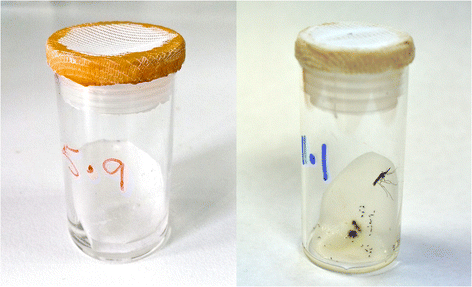
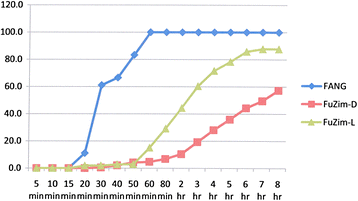
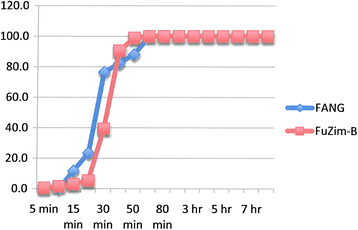
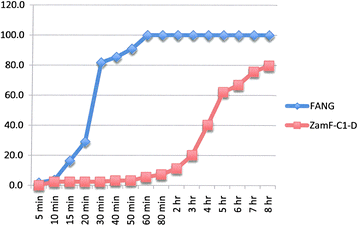
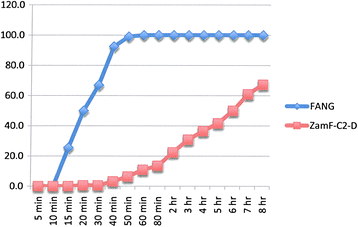
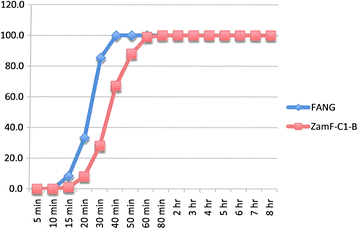
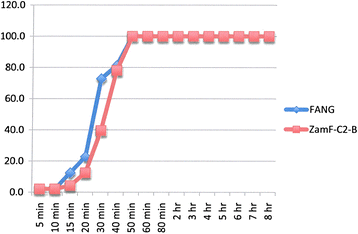
Similar articles
-
Pyrethroid and Carbamate Resistance in Anopheles funestus Giles along Lake Kariba in Southern Zambia.Am J Trop Med Hyg. 2020 Aug;103(2_Suppl):90-97. doi: 10.4269/ajtmh.19-0664. Am J Trop Med Hyg. 2020. PMID: 32618244 Free PMC article.
-
The emergence of insecticide resistance in the major malaria vector Anopheles funestus (Diptera: Culicidae) from sentinel sites in Mutare and Mutasa Districts, Zimbabwe.Malar J. 2015 Nov 20;14:466. doi: 10.1186/s12936-015-0993-8. Malar J. 2015. PMID: 26589891 Free PMC article.
-
Comparative assessment of insecticide resistance phenotypes in two major malaria vectors, Anopheles funestus and Anopheles arabiensis in south-eastern Tanzania.Malar J. 2020 Nov 11;19(1):408. doi: 10.1186/s12936-020-03483-3. Malar J. 2020. PMID: 33176805 Free PMC article.
-
Vectorial status and insecticide resistance of Anopheles funestus from a sugar estate in southern Mozambique.Parasit Vectors. 2011 Feb 9;4:16. doi: 10.1186/1756-3305-4-16. Parasit Vectors. 2011. PMID: 21306631 Free PMC article.
-
Insecticide resistance status of three malaria vectors, Anopheles gambiae (s.l.), An. funestus and An. mascarensis, from the south, central and east coasts of Madagascar.Parasit Vectors. 2017 Aug 23;10(1):396. doi: 10.1186/s13071-017-2336-9. Parasit Vectors. 2017. PMID: 28835269 Free PMC article.
Cited by
-
When a discriminating dose assay is not enough: measuring the intensity of insecticide resistance in malaria vectors.Malar J. 2015 May 20;14:210. doi: 10.1186/s12936-015-0721-4. Malar J. 2015. PMID: 25985896 Free PMC article.
-
Novel Strategies for Malaria Vaccine Design.Front Immunol. 2018 Nov 29;9:2769. doi: 10.3389/fimmu.2018.02769. eCollection 2018. Front Immunol. 2018. PMID: 30555463 Free PMC article. Review.
-
Changes in contributions of different Anopheles vector species to malaria transmission in east and southern Africa from 2000 to 2022.Parasit Vectors. 2023 Nov 7;16(1):408. doi: 10.1186/s13071-023-06019-1. Parasit Vectors. 2023. PMID: 37936155 Free PMC article. Review.
-
Genetic differentiation and population structure of Anopheles funestus from Uganda and the southern African countries of Malawi, Mozambique, Zambia and Zimbabwe.Parasit Vectors. 2020 Feb 18;13(1):87. doi: 10.1186/s13071-020-3962-1. Parasit Vectors. 2020. PMID: 32070403 Free PMC article.
-
Genomic Footprints of Selective Sweeps from Metabolic Resistance to Pyrethroids in African Malaria Vectors Are Driven by Scale up of Insecticide-Based Vector Control.PLoS Genet. 2017 Feb 2;13(2):e1006539. doi: 10.1371/journal.pgen.1006539. eCollection 2017 Feb. PLoS Genet. 2017. PMID: 28151952 Free PMC article.
References
-
- Sinka ME, Bangs MJ, Manguin S, Coetzee M, Mbogo CM, Hemingway J, Patil AP, Temperley WH, Gething PW, Kabaria CW, Okara RM, Van Boeckel T, Godfray HCJ, Harbach RE, Hay SI. The dominant Anopheles vectors of human malaria in Africa, Europe and the Middle East: occurrence data, distribution maps and bionomic précis. Parasit Vectors. 2010;3:117. doi: 10.1186/1756-3305-3-117. - DOI - PMC - PubMed
-
- Brown AWA. Insecticide resistance in mosquitoes: a pragmatic review. J Am Mosq Control Assoc. 1986;2:123–140. - PubMed
Publication types
MeSH terms
Substances
Grants and funding
LinkOut - more resources
Full Text Sources
Other Literature Sources

